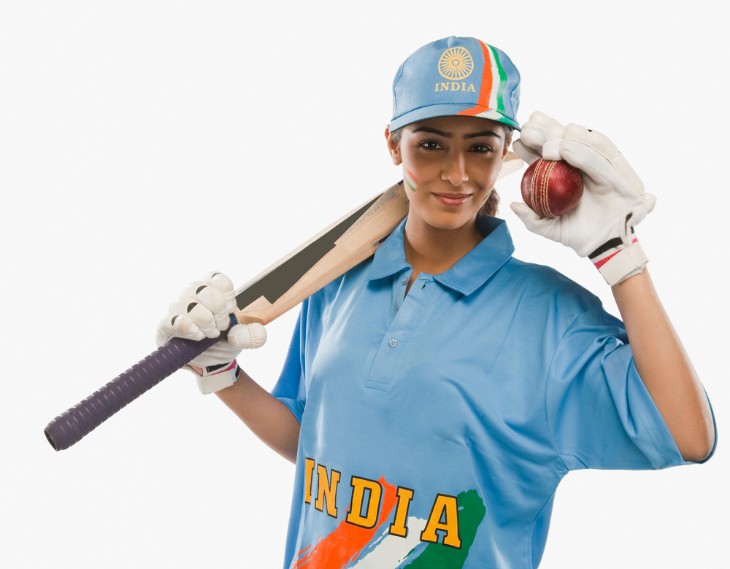Introduction
Women's cricket in the United Kingdom has seen significant growth and transformation over the years. We will explore the key milestones, notable figures, and structural changes that have contributed to the rise of women's cricket as a prominent sporting pursuit in the country.
Historical Overview of Women's Cricket in the UK
The history of women's cricket in the UK dates back to the late 18th century, with documented matches as early as 1745. It's worth noting that the game was initially played by women from aristocratic backgrounds and was often viewed as a social event rather than a serious sporting competition.
One of the pivotal moments in the early history of women's cricket was the formation of the White Heather Club in 1890. This club played a significant role in promoting and organizing women's cricket matches in England. It wasn't until 1934 that the first official women's cricket association, the Women's Cricket Association (WCA), was established. The WCA helped create a structured framework for women's cricket, facilitating the growth of the sport.
During the mid-20th century, women's cricket began to gain recognition on the international stage. The first-ever women's Test match took place in 1934 between England and Australia, marking a milestone in the sport's history. The Women's Cricket World Cup was introduced in 1973, further enhancing the visibility and competitive nature of women's cricket.
Despite these developments, women's cricket in the UK faced several challenges and inequalities during its early years. Limited opportunities, unequal pay, and a lack of media coverage hindered the growth of the sport. However, determined individuals and organisations worked tirelessly to overcome these obstacles.
In 1998, the Women's Cricket Association merged with the England and Wales Cricket Board (ECB), marking a significant step towards gender equality in cricket administration. This move brought women's cricket under the umbrella of the national cricketing body, providing it with greater support and resources.
The 21st century has witnessed remarkable progress for women's cricket in the UK. The introduction of professional contracts for female players in 2014 marked a turning point, providing financial stability and recognition to players. The England women's team has consistently performed well on the international stage, winning the ICC Women's World Cup in 2017.
For further information see our article: When Is the Cricket World Cup.
The Pioneers and Early Developments
It's essential to recognise the pioneering figures who played a crucial role in shaping the sport during its formative years.
One such figure is Lady Helena Rowley, who is often credited as one of the earliest female cricketers in the UK. She gained attention for her exceptional skills and enthusiasm for the game during the mid-19th century. Her participation in cricket matches, though unconventional for the time, helped challenge societal norms and laid the foundation for future female cricketers.
Another notable pioneer was Lilian Mundy, who is often referred to as the 'Queen of Women's Cricket.' Mundy's dedication and leadership were instrumental in the establishment of the White Heather Club in 1890, a significant development in the history of women's cricket. This club provided a platform for women to engage in cricket and contributed to the sport's growth.
During this era, women's cricket was still a relatively informal affair, with matches often organised as social events. However, as interest in the sport grew, so did the need for more structured competition. The early 20th century saw the emergence of women's cricket clubs and teams across the UK.
One noteworthy event was the formation of the first women's cricket team in 1890, the Original English Lady Cricketers. This team, comprising players like Lilian Mundy and May Hill, embarked on a tour of the United States in 1890-91, introducing women's cricket to a global audience.
The dedication and commitment of these early pioneers helped shape the perception of women's cricket in the UK. It was no longer viewed solely as a leisure activity but as a legitimate sporting pursuit.
Despite their passion and achievements, female cricketers faced numerous challenges in gaining acceptance and recognition. Gender biases and societal norms limited their opportunities, but these early pioneers persevered, laying the groundwork for future generations of women in cricket.

Evolution of Women's Cricket Structures
The Women's Cricket Association (WCA), established in 1934, marked a significant milestone in the history of women's cricket in the UK. This organisation was dedicated to promoting and governing women's cricket. It introduced standardized rules and regulations, providing a framework for competitive matches.
The creation of the WCA allowed women's cricket to flourish, with more clubs and teams emerging across the country. It also facilitated the scheduling of domestic and international fixtures, enabling female cricketers to showcase their talents on a broader stage.
One of the most notable developments during this period was the introduction of women's Test matches. In 1934, England played Australia in the first-ever women's Test match. This historic event laid the foundation for a long-standing rivalry between the two nations, adding prestige to the sport.
The Women's Cricket Association also organised regular county competitions, fostering talent development and competition at the regional level. County cricket provided a pathway for promising players to progress to the national team, ensuring a steady influx of talent.
Despite these positive strides, women's cricket still faced societal challenges. The limited access to resources, facilities, and coaching for female players hindered their progress. The lack of media coverage and financial support added to the difficulties faced by aspiring cricketers.
However, dedicated individuals and organisations continued to advocate for women's cricket. The formation of women's cricket clubs in schools and universities helped nurture talent from a young age. Additionally, the inclusion of women's cricket in the school curriculum encouraged more girls to take up the sport.
Women's Cricket in the Modern Era
The late 20th and early 21st centuries brought about significant changes in the perception and support for women's cricket. One of the key turning points was the introduction of professional contracts for female players in 2014. This step provided financial stability and recognition to female cricketers, allowing them to focus on their careers and compete at the highest level.
The England women's cricket team emerged as a force to be reckoned with on the international stage. They consistently performed well in various formats of the game, including One Day Internationals (ODIs) and Twenty20 Internationals (T20Is). The crowning moment came in 2017 when England won the ICC Women's World Cup, capturing the imagination of cricket fans across the country.
Increased media coverage and broadcasting of women's cricket matches helped raise its profile and attract a wider audience. The Women's Super League (WSL), a domestic T20 competition, further contributed to the sport's popularity. It provided a platform for both domestic and international players to showcase their skills in a competitive league.
The growth of women's cricket extended beyond the national team and domestic leagues. Participation at the grassroots level surged, with more girls taking up the sport at schools and clubs. Initiatives to promote women's cricket, such as coaching programs and talent identification camps, further nurtured talent and ensured a pipeline of skilled players.
The inclusivity and diversity of women's cricket also expanded. Players from diverse backgrounds began to make their mark in the sport, reflecting the multicultural society of the UK. This inclusivity not only enriched the talent pool but also contributed to the sport's appeal to a broader audience.
For more related information read our articles: Key Differences Between Test, ODI, and T20 Formats and Key Metrics to Consider in T20 Cricket Betting.

Challenges and Opportunities
One of the persistent challenges faced by women's cricket has been the issue of gender equality. While strides have been made in providing professional contracts and improving pay for female players, disparities still exist in comparison to their male counterparts. Achieving gender parity in terms of pay, resources, and opportunities remains an ongoing challenge for the sport.
Another challenge has been the limited media coverage and visibility of women's cricket, especially in comparison to men's cricket. While major tournaments like the ICC Women's World Cup have garnered attention, there is room for improvement in terms of consistent coverage of domestic matches and leagues. Increased visibility can attract sponsors and fans, further bolstering the sport.
Infrastructure and facilities for women's cricket have also faced constraints. While there has been progress in terms of access to training facilities and coaching, there is a need for continued investment in infrastructure to support the development of young talent and the growth of the sport at all levels.
On the positive side, women's cricket in the UK has a host of opportunities to explore. The successful hosting of international tournaments, such as the Women's World Cup, can provide a platform to showcase the sport and generate interest among fans and sponsors.
The growth of women's cricket at the grassroots level is a significant opportunity. Initiatives aimed at schools and local clubs have the potential to nurture talent from a young age and increase participation. Additionally, promoting diversity and inclusivity in the sport can attract a wider range of participants and fans.
The support and advocacy of governing bodies like the England and Wales Cricket Board (ECB) are vital in addressing these challenges and capitalising on opportunities. The ECB's commitment to the growth of women's cricket, as demonstrated by the merger with the Women's Cricket Association (WCA) and the introduction of professional contracts, is a positive sign for the sport's future.
Future Prospects and Growth
One of the most significant opportunities lies in strengthening the domestic structure of women's cricket. Developing robust leagues and competitions at the county and club levels can help identify and nurture talent from a young age. Providing adequate coaching, facilities, and support is crucial for player development.
The inclusion of women's cricket in schools and universities can further expand the talent pool. Initiatives that encourage girls to take up the sport and provide them with opportunities to excel can contribute to a brighter future for women's cricket.
Enhancing media coverage and broadcasting of women's cricket matches is essential for increasing visibility and attracting a broader audience. Television, online streaming, and social media platforms can play a pivotal role in bringing the sport to a wider fan base.
Sponsorship and investment in women's cricket are areas with significant growth potential. Partnerships with corporations and businesses can provide the financial support needed to elevate the sport to new heights. This support can be channelled towards player development, infrastructure, and marketing efforts.
The continued success of the England women's cricket team on the international stage is pivotal in driving interest and participation at all levels. Consistent performances in ICC events and bilateral series can inspire a new generation of female cricketers.
The development of role models and ambassadors for women's cricket is equally important. Celebrating the achievements of female players and their contributions to the sport can inspire young girls to pursue cricket as a career.
Conclusion
The rise of women's cricket in the UK is a testament to the dedication and resilience of players, administrators, and supporters who have worked tirelessly to transform the sport. From its humble beginnings to its current status as a competitive and thriving discipline, women's cricket has come a long way.


